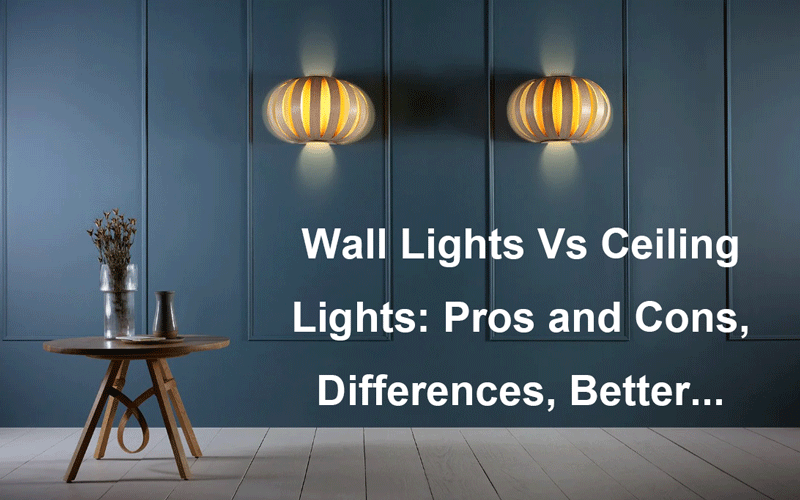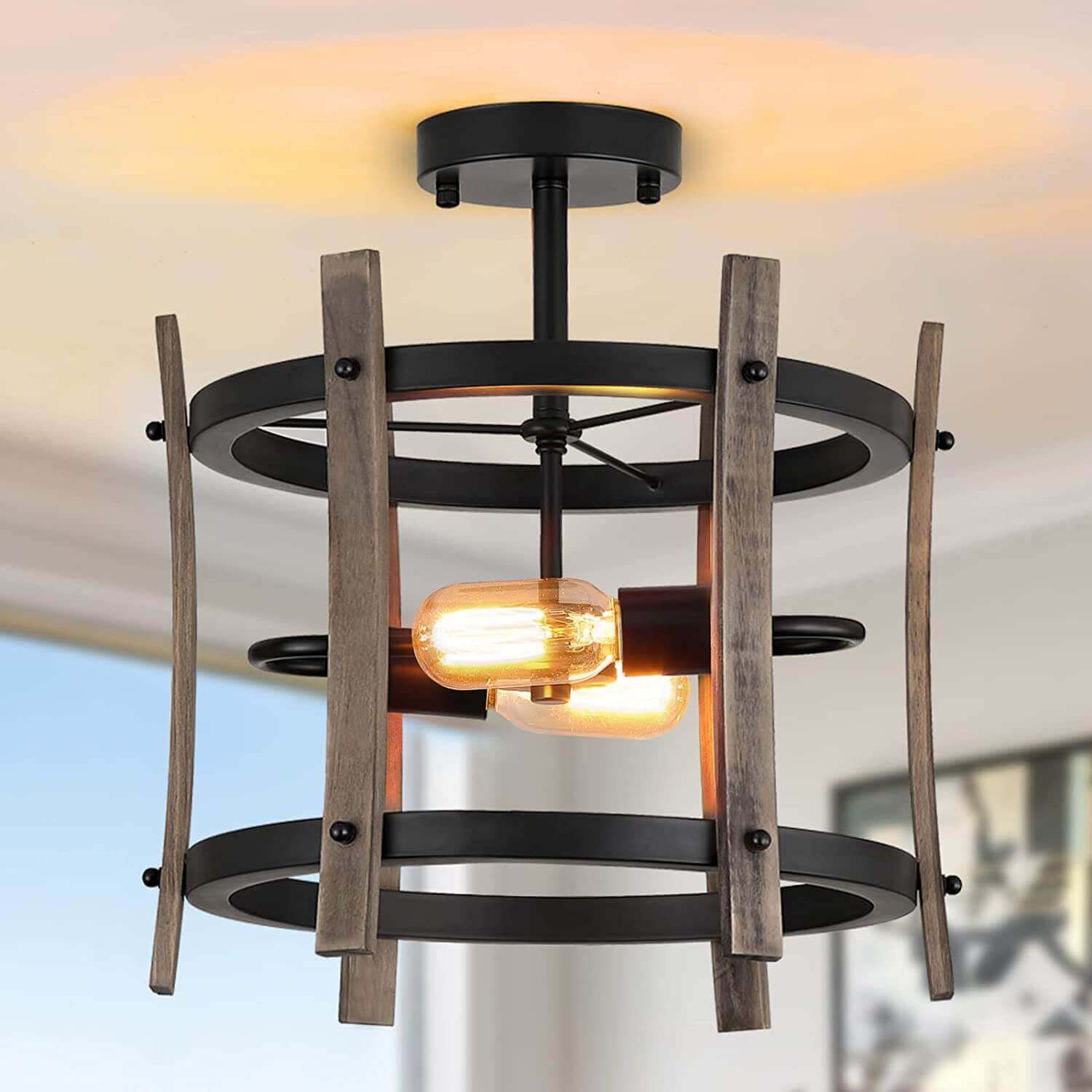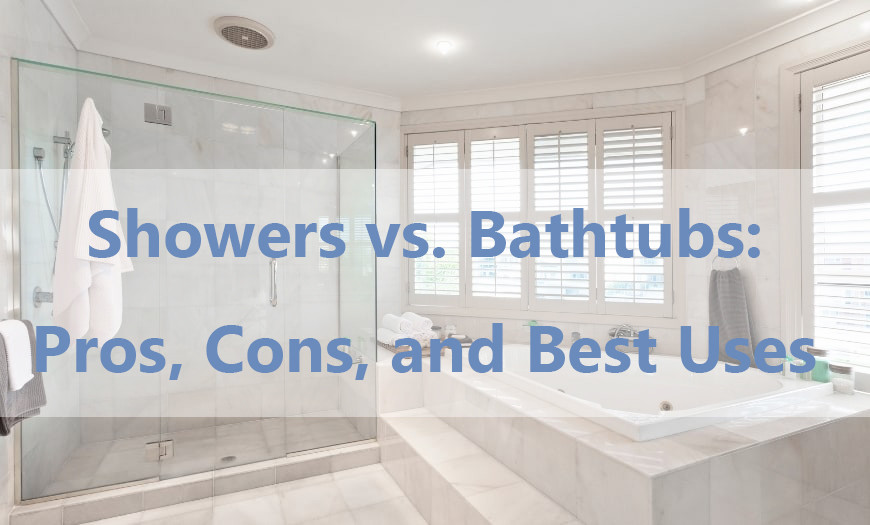
When it comes to lighting up a space, whether it’s a cozy bedroom, a bustling kitchen, or a sophisticated living room, choosing between wall lights vs ceiling lights can significantly impact the ambiance and functionality of the room. Each type of lighting fixture has its own set of pros and cons, and understanding these differences can help you make an informed decision based on your specific needs and preferences.
1. Placement and Functionality
One of the primary differences between wall lights and ceiling lights lies in their placement and functionality. Ceiling lights, as the name suggests, are installed directly into the ceiling and typically provide general illumination throughout the entire room. They can come in various forms, including flush mounts, semi-flush mounts, chandeliers, and pendant lights, offering different levels of brightness and aesthetic appeal.
On the other hand, wall lights are mounted onto the walls and are often used to provide localized illumination or accent lighting. They can be positioned strategically to highlight architectural features, artwork, or specific areas of interest within a room. Wall lights come in diverse styles such as sconces, picture lights, and swing-arm lamps, adding both functionality and visual interest to the space.
2. Ambiance and Atmosphere
Another important consideration when choosing between wall lights and ceiling lights is the ambiance and atmosphere you wish to create in the room. Ceiling lights, particularly those with adjustable dimming capabilities, offer versatility in setting the mood. Whether you’re hosting a lively gathering or enjoying a quiet evening at home, ceiling lights can be adjusted to provide the desired level of brightness and ambiance.
On the contrary, wall lights contribute to a more intimate and cozy atmosphere by casting soft, indirect light that complements the room’s décor. They create visual interest and depth, adding warmth and character to the space. Additionally, wall lights can help reduce glare and harsh shadows, making them ideal for relaxation areas such as bedrooms, reading nooks, or dining rooms.
3. Space Considerations
The layout and size of the room can also influence your decision between wall lights and ceiling lights. In smaller spaces with low ceilings, such as bathrooms or hallways, wall lights may be preferred as they take up less visual space and provide adequate illumination without overwhelming the area. They can also free up valuable floor and surface space, making the room feel more open and airy.
Alternatively, in larger rooms with high ceilings, ceiling lights can serve as statement pieces that draw the eye upward and contribute to a sense of grandeur and spaciousness. By evenly distributing light across the entire room, ceiling lights can prevent dark corners and create a more cohesive lighting scheme that enhances the overall aesthetic appeal of the space.
4. Design and Style
Both wall lights and ceiling lights come in a wide range of designs, styles, and finishes to suit any décor preference or architectural style. Ceiling lights offer versatility in terms of placement and design, with options ranging from sleek and modern fixtures to ornate and traditional chandeliers. They can be used to make a bold statement or seamlessly blend into the surrounding décor, depending on your design goals.
Wall lights, on the other hand, are often chosen for their decorative appeal and ability to add visual interest to vertical surfaces. From minimalist sconces to vintage-inspired lanterns, wall lights come in an array of styles that can complement any interior theme or color scheme. Additionally, the positioning of wall lights allows for creative lighting effects and focal points that can elevate the overall design of the room.
5. Installation and Maintenance
When it comes to installation and maintenance, both wall lights and ceiling lights have their own set of considerations. Ceiling lights typically require more extensive installation, especially if wiring needs to be adjusted or additional support is needed to accommodate heavier fixtures. Regular maintenance, such as changing light bulbs or cleaning fixtures, may also be more challenging for ceiling lights, depending on their height and accessibility.
On the contrary, wall lights are generally easier to install and mai4ntain, as they can be mounted directly onto existing wall surfaces without the need for complex wiring or structural modifications. Maintenance tasks such as dusting or replacing bulbs can be performed more easily, making wall lights a convenient option for homeowners looking for hassle-free lighting solutions.
Conclusion: Wall Lights Vs Ceiling Lights
In conclusion, the choice between wall lights and ceiling lights ultimately depends on your specific lighting needs, design preferences, and the unique characteristics of the space. While ceiling lights offer general illumination and can make a bold statement in larger rooms, wall lights provide localized lighting and decorative accents that can enhance the ambiance and functionality of any space. By carefully considering the pros and cons of each type of lighting fixture, you can create a lighting scheme that perfectly suits your style and enhances the beauty of your home.
 WOWOW Faucets
WOWOW Faucets







您好!Please sign in